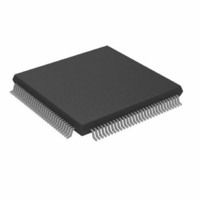ADV611JSTZ Analog Devices Inc, ADV611JSTZ Datasheet - Page 5

ADV611JSTZ
Manufacturer Part Number
ADV611JSTZ
Description
CCTV Digital Video Codec
Manufacturer
Analog Devices Inc
Type
Video Codecr
Datasheet
1.ADV611JSTZ.pdf
(46 pages)
Specifications of ADV611JSTZ
Data Interface
Serial
Resolution (bits)
8 b
Sigma Delta
No
Voltage - Supply, Digital
4.5 V ~ 5.5 V
Operating Temperature
0°C ~ 70°C
Mounting Type
Surface Mount
Package / Case
120-LQFP
Lead Free Status / RoHS Status
Lead free / RoHS Compliant
Available stocks
Company
Part Number
Manufacturer
Quantity
Price
Company:
Part Number:
ADV611JSTZ
Manufacturer:
ADI
Quantity:
526
Company:
Part Number:
ADV611JSTZ
Manufacturer:
Analog Devices Inc
Quantity:
10 000
Part Number:
ADV611JSTZ
Manufacturer:
ADI
Quantity:
20 000
References
For more information on the terms, techniques and underlying
principles referred to in this data sheet, you may find the follow-
ing reference texts useful. A reference text for general digital
video principles is:
Jack, K., Video Demystified: A Handbook for the Digital Engineer
(High Text Publications, 1993) ISBN 1-878707-09-4
Three reference texts for wavelet transform background infor-
mation are:
Vetterli, M., Kovacevic, J., Wavelets And Subband Coding
(Prentice Hall, 1995) ISBN 0-13-097080-8
Benedetto, J., Frazier, M., Wavelets: Mathematics And Applica-
tions (CRC Press, 1994) ISBN 0-8493-8271-8
Grossman, A., Morlet, J., Decomposition of Hardy Functions into
Square Integrable Wavelets of Constant Shape, Siam. J. Math.
Anal., Vol. 15, No. 4, pp 723-736, 1984
THE WAVELET KERNEL
This block contains a set of filters and decimators that work on
the image in both horizontal and vertical directions. Figure 8
illustrates the filter tree structure. The filters apply carefully
chosen wavelet basis functions that better correlate to the broad-
band nature of images than the sinusoidal waves used in Dis-
crete Cosine Transform (DCT) compression schemes (JPEG,
MPEG, and H261).
An advantage of wavelet-based compression is that the entire
image can be filtered without being broken into sub-blocks as
required in DCT compression schemes. This full image filtering
eliminates the block artifacts seen in DCT compression and
offers more graceful image degradation at high compression
ratios. The availability of full image subband data also makes
REV. 0
ENCODE
DECODE
PATH
PATH
BLOCK A IS HIGH PASS IN X AND DECIMATED BY TWO.
BLOCK B IS HIGH PASS IN X, HIGH PASS IN Y, AND DECIMATED BY EIGHT.
BLOCK C IS HIGH PASS IN X, LOW PASS IN Y, AND DECIMATED BY EIGHT.
BLOCK D IS LOW PASS IN X, HIGH PASS IN Y, AND DECIMATED BY EIGHT.
BLOCK E IS HIGH PASS IN X, HIGH PASS IN Y, AND DECIMATED BY 32.
BLOCK F IS HIGH PASS IN X, LOW PASS IN Y, AND DECIMATED BY 32.
BLOCK G IS LOW PASS IN X, HIGH PASS IN Y, AND DECIMATED BY 32.
FILTER BANK
N
M
Figure 4. Encode and Decode Paths
WAVELET
KERNEL
J
L
K
G
Figure 5. Modified Mallat Diagram (Block Letters Correspond to Those in Filter Tree)
H
I
D
QUANTIZER
ADAPTIVE
F
E
RUN LENGTH
HUFFMAN
CODER &
CODER
COMPRESSED
C
B
DATA
–5–
BLOCK H IS HIGH PASS IN X, HIGH PASS IN Y, AND DECIMATED BY 128.
BLOCK I IS HIGH PASS IN X, LOW PASS IN Y, AND DECIMATED BY 128.
BLOCK J IS LOW PASS IN X, HIGH PASS IN Y, AND DECIMATED BY 128.
BLOCK K IS HIGH PASS IN X, HIGH PASS IN Y, AND DECIMATED BY 512.
BLOCK L IS HIGH PASS IN X, LOW PASS IN Y, AND DECIMATED BY 512.
BLOCK M IS LOW PASS IN X, HIGH PASS IN Y, AND DECIMATED BY 512.
BLOCK N IS LOW PASS IN X, LOW PASS IN Y, AND DECIMATED BY 512.
image processing, scaling, and a number of other system fea-
tures possible with little or no computational overhead.
The resultant filtered image is made up of components of the
original image as is shown in Figure 5 (a modified Mallat Tree).
Note that Figure 5 shows how a component of video would be
filtered, but in multiple component video, luminance and color
components are filtered separately. In Figure 6 and Figure 7 an
actual image and the Mallat Tree (luminance only) equivalent is
shown. It is important to note that while the image has been
filtered or transformed into the frequency domain, no compres-
sion has occurred. With the image in its filtered state, it is now
ready for processing in the second block, the quantizer.
Understanding the structure and function of the wavelet filters
and resultant product is the key to obtaining the highest perfor-
mance from the ADV611/ADV612. Consider the following
points:
• The data in all blocks (except N) for all components are high
• The data in most blocks is more likely to contain zeros or
• The human visual system is less sensitive to higher frequency
• Attenuation of the selected blocks in luminance or color com-
• High quality filtered/decimated images can be extracted/created
Through leverage of these key points, the ADV611/ADV612
not only compresses video, but offers a host of application
features. Please see the Applying the ADV611/ADV612 section
for details on getting the most out of the ADV611/ADV612’s
subband coding architecture in different applications.
pass filtered. Therefore, the mean pixel value in those blocks
is typically zero and a histogram of the pixel values in these
blocks will contain a single “hump” (Laplacian distribution).
strings of zeros than unfiltered image data.
blocks than low ones.
ponents results in control over sharpness, brightness, contrast
and saturation.
without computational overhead.
A
ADV611/ADV612













